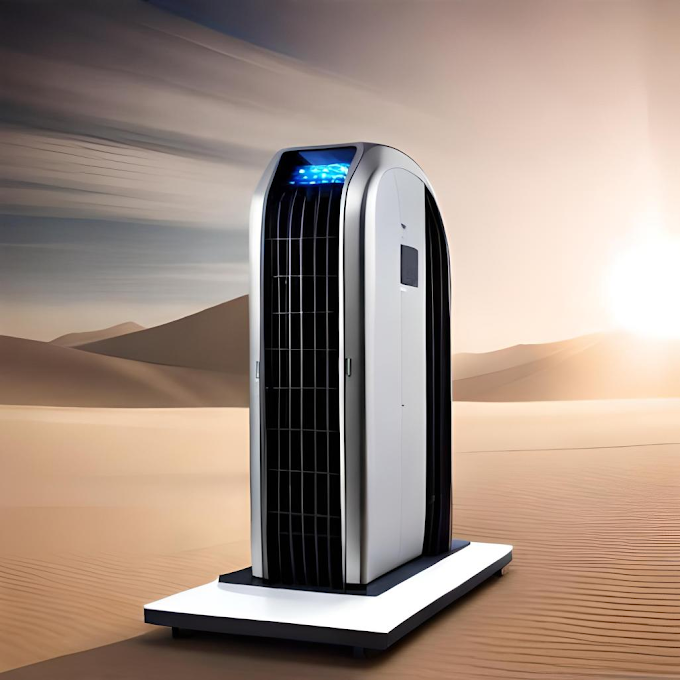Stay Cool Anywhere: The Ultimate Guide to Portable Fan
Portable Fans: A Brief Introduction
A portable fan is a convenient and compact device that provides fresh air on the go It is designed to be lightweight and easy to carry, making it ideal for personal cooling in a variety of settings. Portable fans come in a variety of types, sizes, and power sources to suit individual needs and preferences.
A portable fan is a small, handheld or table fan that provides personal cooling wherever you need it. It usually consists of a motor and blades enclosed in a housing, which can be adjusted or oscillated to direct the airflow. Portable fans are powered by battery, USB or electricity and are commonly used in home, office, outdoor activities and travel.
Types of portable fans
1. Handheld Fans: These portable fans are compact and designed to be held in the hand. They usually have a handle or grip, which makes them easy to carry and provides direct cooling when needed.
2. Table fans: Table fans are slightly larger than handheld fans and are placed on a table or flat surface. They provide a wide airflow and can be adjusted to different angles for better cooling.
3. Clip-on fans: Clip-on fans have a clip or clamp that allows them to be attached to various surfaces, such as desks, chairs or strollers. They provide hands-free cooling and are versatile in placement.
4. USB Fans: USB fans are powered by connecting them to a USB port, such as those found on computers, laptops or power banks. They are convenient for use in office space or while working on computer.
Source of energy
Portable fans can be powered by different sources depending on the model and design. Common power sources for portable fans are:
1. Battery-powered: These fans are powered by replaceable or rechargeable batteries, providing cordless and portable operation. They are suitable for outdoor activities or places without electricity.
2. USB-powered: USB fans can be powered by connecting to a USB port, making them compatible with various devices such as laptops, power banks or car chargers. They are convenient for use in office settings or while traveling.
3. Electric Powered: Electric powered portable fans need to be plugged into a power outlet for operation. They provide continuous airflow and are suitable for indoor use where electricity is available.
Number of blades
Portable fans can have different numbers of blades, usually from two to five. The number of blades can affect the fan's airflow and noise level. Fans with more blades generally produce a smoother airflow but can also produce more noise than fans with fewer blades.
Product dimensions
Product dimensions refer to the physical measurements of the portable fan, including height, width, and depth. Dimensions may vary depending on the specific model and design of the fan. It is important to consider the size of the fan so that it is suitable for your intended use and storage.
Voltage specification
The voltage specification indicates the electrical voltage required to power the portable fan. Voltage requirements may vary depending on fan design and power source. It is essential to check voltage compatibility with available power outlets or power sources to ensure proper operation.
Energy consumption
Power consumption refers to the amount of electrical energy used by the portable fan during operation. It is usually measured in watts (W) and can vary depending on the fan motor power and speed settings. Low power consumption indicates energy efficiency and long battery life for battery powered fans.
Speed
Portable fan speed refers to the rotational or oscillating speed of the blades, which determines the airflow produced. Portable fans often offer multiple speed settings, such as low, medium, and high, which allow users to adjust the intensity of airflow based on their comfort preferences.
Cry
Portable fan sweep refers to the area covered when the fan blades rotate or oscillate. It represents the maximum distance of airflow. Fans with a larger sweep can provide a wider coverage area and more effective cooling.
Air delivery
Air delivery refers to the volume of air that a portable fan can move or deliver per unit time. It is usually measured in cubic feet per minute (CFM) or cubic meters per hour (m³/h). Higher air delivery indicates a more powerful fan which can provide better cooling efficiency.
Room details
Portable fans can be used in a variety of rooms including bedrooms, living rooms, offices, kitchens or outdoor spaces. Fan size and power should be considered to ensure adequate airflow and cooling based on specific room size and ventilation.
Special features
Portable fans often come with special features to increase usability and convenience. Some common special features include:
1. Adjustable angle: Fans with adjustable angle allow users to tilt or rotate the fan head to direct the airflow in their preferred direction.
2. Oscillation: Fans with oscillation feature can automatically rotate from side to side, providing wide coverage and good airflow distribution.
3. Timer function: Fan with timer function allows users to set a specific operating time, after which the fan automatically shuts off. This can be useful for saving energy or using the fan while sleeping.
Mount type
The mounting type refers to how the portable fan is positioned or attached. Various mounting options include:
1. Handheld: Handheld fans are designed to be held in the hand for direct cooling.
2. Tabletop: Tabletop fans are meant to be placed on a flat surface, such as a table or desk
3. Clip-on: Clip-on fans have a clip or clamp that allows them to be attached to various surfaces, such as desks, chairs or strollers.
Controller type
Controller type refers to the method of controlling fan settings. Portable fans can have different types of controllers, including:
1. On-device control: Fans with on-device control have buttons or switches on the fan itself to adjust settings like speed or oscillation.
2. Remote Control: Some portable fans come with a remote control that allows users to conveniently adjust fan settings remotely.
Material details
Portable fans are usually made of durable materials that ensure longevity and safety. Common materials used in the construction of portable fans include:
1. Plastic: Plastic is lightweight, affordable, and commonly used in portable fans. It is durable and resistant to rust or corrosion.
2. Metal: Metal fans provide sturdiness and a more classic aesthetic. They are often heavier than plastic fans but can provide better durability.
The market offers a wide range of portable fans with different designs, features and brands. The number of similar products available may vary depending on factors such as location, demand, and current market trends. It is advisable to explore various options and compare features before making a purchase.
Good's and Bad
Benefits:
- Provides convenient personal cooling on the go.
- Lightweight and easy to carry.
- Offers versatility with different power sources and mounting options.
- Various speed settings and special features enhance comfort and usability.
- Can be used in a variety of room types and outdoor settings.
Disadvantages:
- Limited cooling capacity compared to large fans or air conditioners.
- Battery powered fans may have a limited operating time before the battery needs to be recharged or replaced.
- Noise levels may vary depending on fan design and speed settings.
- Cooling efficiency may depend on fan proximity and ambient temperature.
Conclusion
Portable fans are practical and portable devices that offer personal cooling in a compact form. With a variety of types, power sources, speeds and special features available, there is a Portable fans suit different needs and preferences. Whether for indoor use, outdoor activities or travel, portable fans provide a fresh breeze wherever you need it.
FAQs (Frequently Asked Questions) with answers:
Q: Can I use the portable fan outside?
A: Yes, portable fans designed for outdoor use are available. These fans are often battery-operated and may have features such as weather resistance.
Q: Can I adjust the angle of the portable fan?
A: Many portable fans come with adjustable angles, which allow users to tilt or rotate the fan head to direct the airflow in the direction they prefer.
Q: How long can a battery powered portable fan run?
Answer: The operating time of battery-powered portable fans depends on factors such as battery capacity and fan speed settings.
Q: Are portable fans noisy?
Answer: The noise level of portable fans can vary depending on the fan design, blade speed and materials used. Look for fans with noise reduction features for quieter operation.
Q: Can I use a portable fan while sleeping?
A: Yes, portable fans can provide cooling while sleeping. Look for fans with adjustable speed settings and timer functions for better comfort while sleeping.
Q: Can I clean the portable fan?
Answer: Yes, portable fans can be cleaned. Follow the manufacturer's instructions to safely clean the fan, usually by removing the front grill and using a soft cloth or brush.
Q: Can I use a portable fan in a small room?
Answer: Yes, portable fans are suitable for small rooms. Consider fan airflow and adjust speed and direction to achieve optimal cooling.
Q: Are portable fans energy efficient?
Answer: Portable fans are generally more energy-efficient than air conditioning units. Look for fans with low power consumption and energy-saving features for increased efficiency
Q: Are there portable fans with USB connection?
A: Yes, many portable fans can be powered by a USB connection, allowing them to be used with devices such as laptops, power banks or car chargers.
Q: Can I use a portable fan while charging?
A: It is generally safe to use a portable fan while charging, especially if it is designed to operate while connected to a power source. However, always follow the manufacturer's instructions for safe use.








